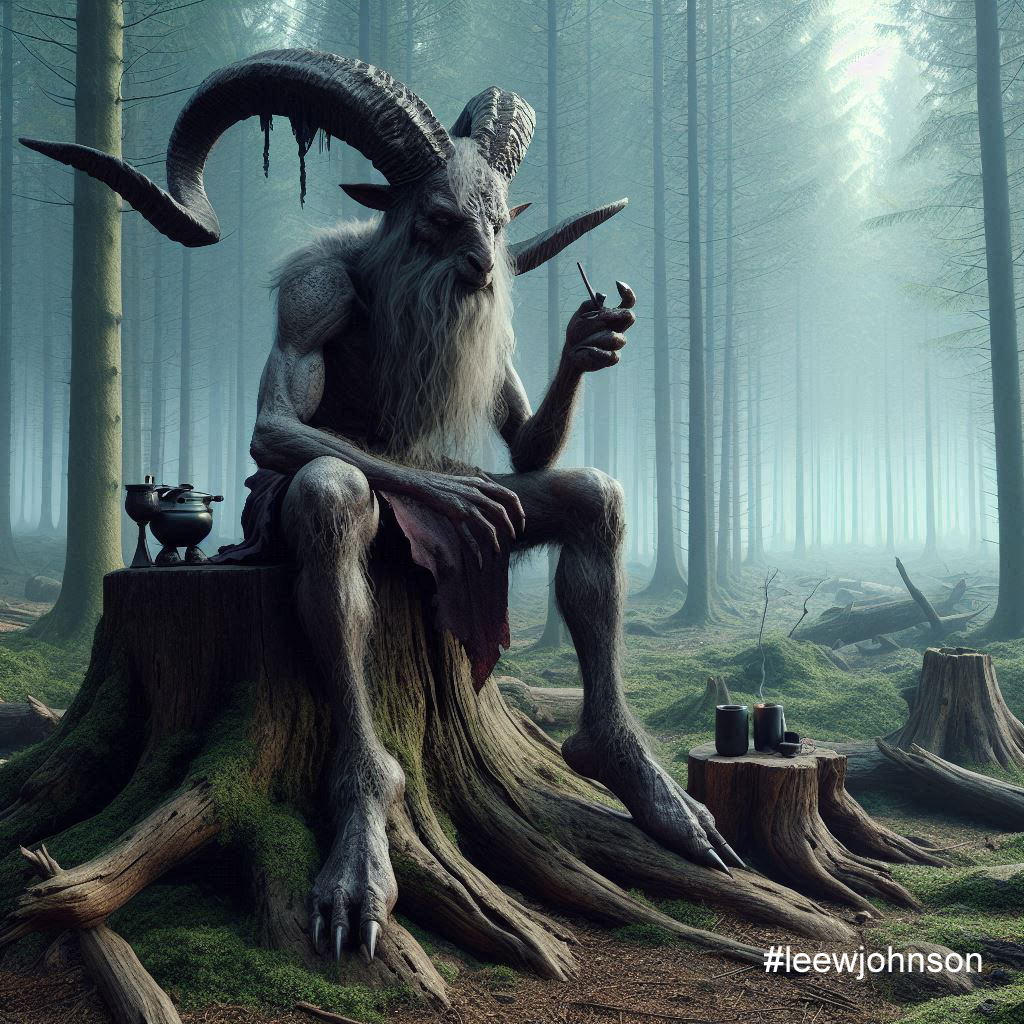Master Leonard

Master Leonard, also known as “Leonard the Master” or simply “Leonard,” is a figure found in European folklore and witchcraft. Often depicted as a demonic figure or the Grand Master of the Witches’ Sabbath, Leonard occupies a significant place in the mythos of the occult, embodying the dark and mysterious elements of medieval and early modern European beliefs.
The figure of Master Leonard originates from medieval European demonology, particularly in France, where he was considered a powerful demon who presided over the Sabbaths. Leonard’s role in these gatherings was that of a leader and teacher, instructing witches in the dark arts and presiding over their rituals. He was often depicted as a horned man, sometimes with the legs and hooves of a goat, a common image in depictions of demonic beings. This imagery aligns him with other horned deities and demons, such as the Greek god Pan and the Devil.
Leonard was believed to have the ability to shapeshift, often appearing in various forms depending on the needs of the ritual or the nature of the encounter. His most common manifestation, however, was that of a black, goat-like figure, a form that solidified his association with witchcraft and the Sabbaths, where witches were said to engage in blasphemous rites and diabolical practices under his guidance.
In the context of witchcraft, Master Leonard is often portrayed as the chief demon or devil who witches would summon to gain knowledge, power, and the ability to perform magical feats. He was believed to be the one who bestowed upon witches their magical abilities, often, it is said, in exchange for their souls, or their loyalty to him. During the Sabbaths, Leonard would preside over rituals, instructing witches in the casting of spells, the preparation of potions, and the summoning of other demons.
The Sabbaths themselves were described in medieval and early modern European literature as nocturnal gatherings where witches would worship the devil, participate in orgiastic rites, and engage in acts of blasphemy. Leonard’s presence at these gatherings symbolized the ultimate rejection of Christian norms and the embrace of the forbidden knowledge and power associated with witchcraft.
In various texts, such as the Dictionnaire Infernal, Leonard was often listed among the hierarchy of demons, sometimes as a prince or grandmaster. His role as a teacher and leader of witches made him a feared and reviled figure among those who sought to root out witchcraft and heresy. The association of Leonard with the witches’ Sabbath also reflects broader societal fears of deviance, particularly in relation to religious orthodoxy, gender roles, and the subversion of societal norms.
The figure of Master Leonard embodies the convergence of several symbolic threads in European folklore. His goat-like appearance and association with the wilderness connect him to the ancient archetype of the wild, untamed forces of nature, which stand in opposition to the ordered, civilized world. This duality reflects the tension between the sacred and the profane.
Leonard’s role as a teacher of forbidden knowledge also places him in the tradition of figures like Prometheus or Lucifer, who bring enlightenment to humanity at a great cost. However, unlike these figures, Leonard’s knowledge is portrayed as inherently corrupting, leading those who seek it into moral and spiritual degradation.
The cultural impact of Master Leonard extends beyond the historical period of witch hunts and Christian treatises. In modern times, he has become a symbol within certain occult traditions, representing the pursuit of esoteric knowledge and the embrace of the darker aspects of spirituality. Some contemporary practitioners of witchcraft and demonolatry may invoke Leonard as a guide or patron, drawing on his traditional associations with wisdom and power.